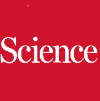Gai2 Signaling Promotes Skeletal Muscle Hypertrophy, Myoblast Differentiation, and Muscle Regeneration
Giulia C. Minetti, etc
Science,
2011
Skeletal muscle atrophy results in loss of strength and an increased risk of mortality. We found that lysophosphatidic acid, which activates a G protein (heterotrimeric guanine nucleotide–binding protein)–coupled receptor, stimulated skeletal muscle hypertrophy through activation of Gai2. Expression of a constitutively active mutant of Gai2 stimulated myotube growth and differentiation, effects that required the transcription factor NFAT (nuclear factor of activated T cells) and protein kinase C. In addition, expression of the constitutively active Gai2 mutant inhibited atrophy caused by the cachectic cytokine TNFa (tumor necrosis factor–a) by blocking an increase in the abundance of the mRNA encoding the E3 ubiquitin ligase MuRF1 (muscle ring finger 1). Gai2 activation also enhanced muscle regeneration and caused a switch to oxidative fibers. Our study thus identifies a pathway that promotes skeletal muscle hypertrophy and differentiation and demonstrates that Gai2-induced signaling can act as a counterbalance to MuRF1-mediated atrophy, indicating that receptors that act through Gai2 might represent potential targets for preventing skeletal muscle wasting.
- Journal
- Science
- Year
- 2011
- Page
- DOI: 10.1126/scisignal.2002038
- Institute
- Novartis
Referenced Services
Vector Biolabs
293 Great Valley Parkway
Malvern, PA 19355
Email: info@vectorbiolabs.com
Phone: +1 484-325-5100
Toll-free (US Only): 877-BIO-LABS
Fax: +1 215-525-1112
Privacy Policy

